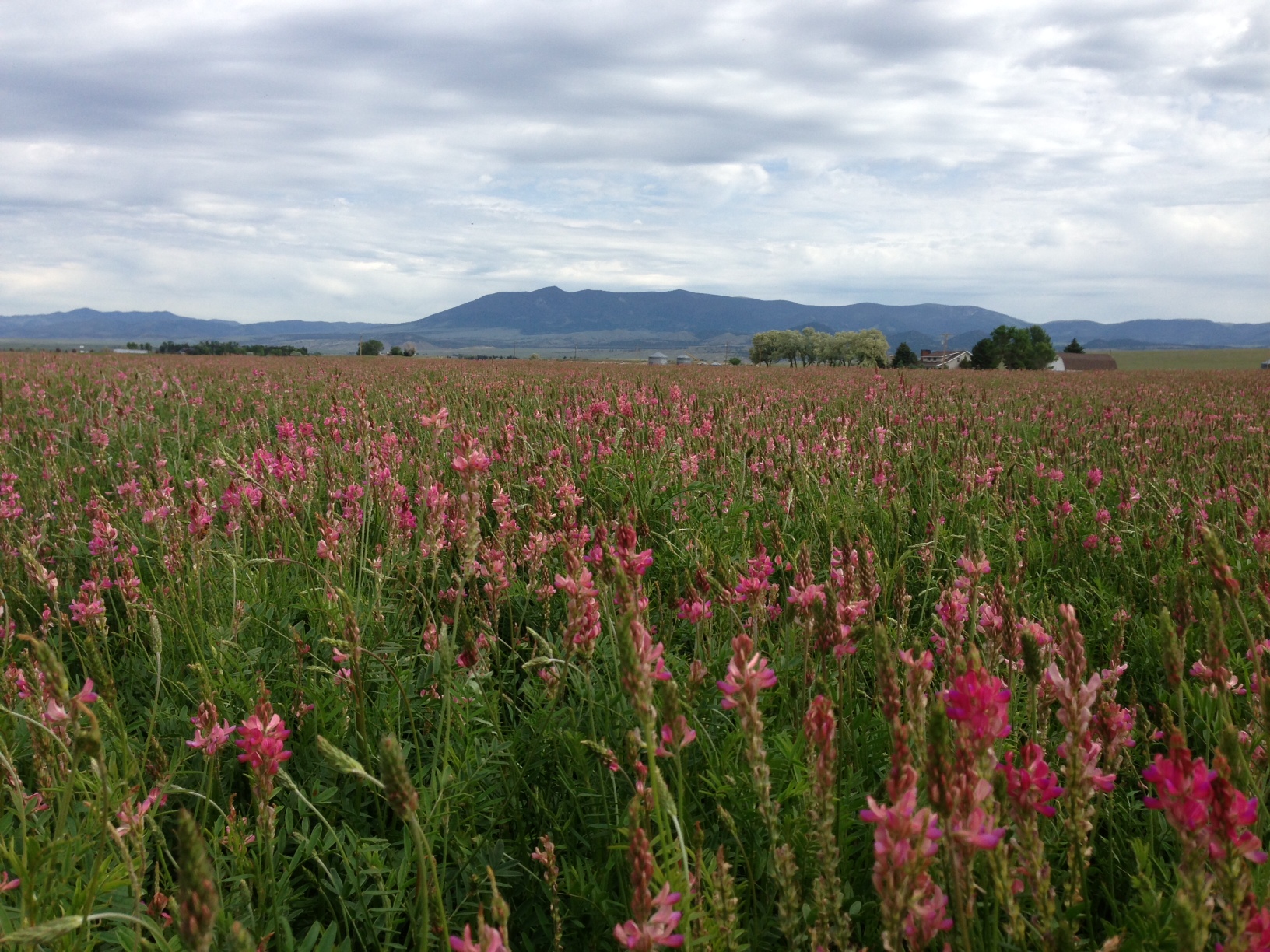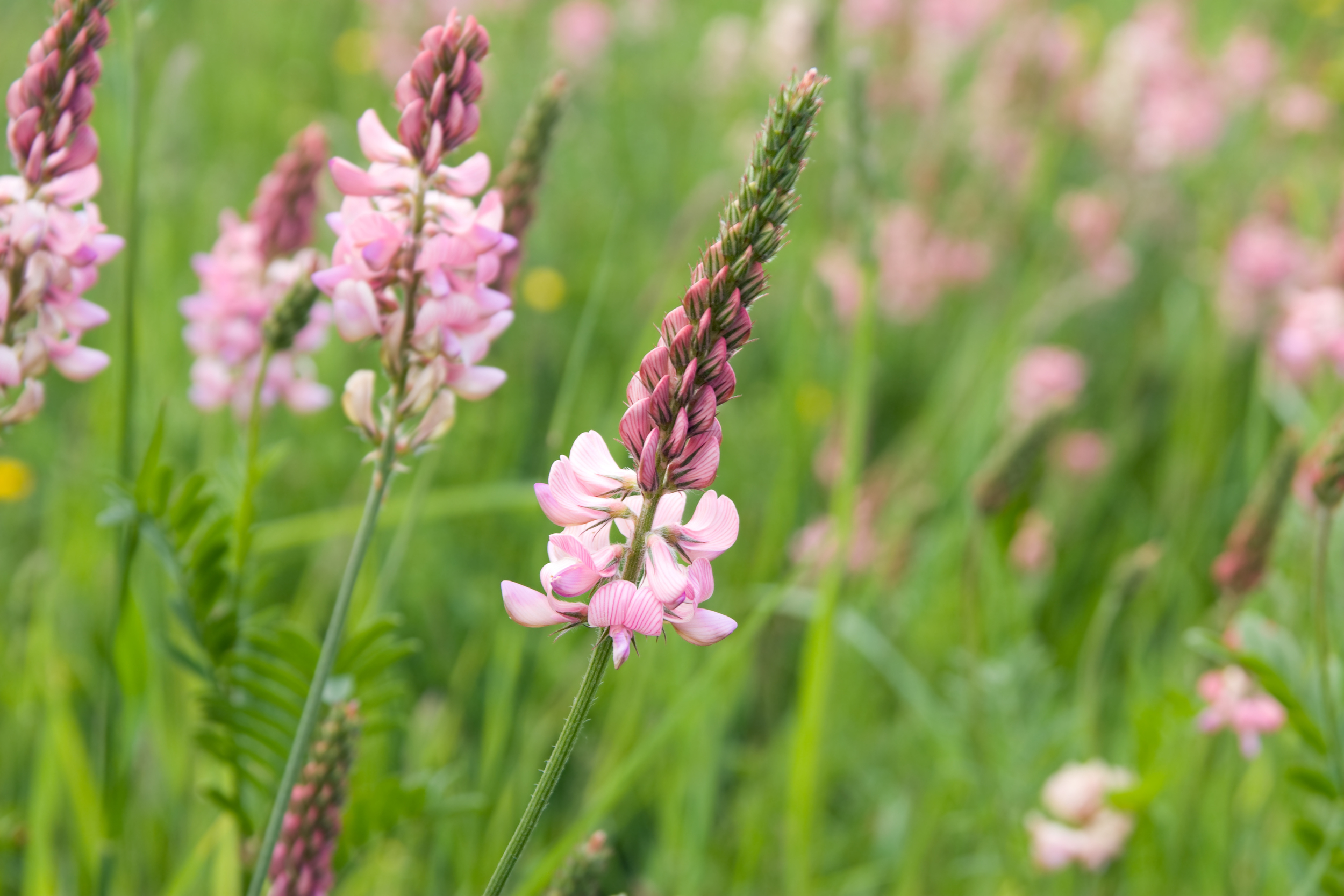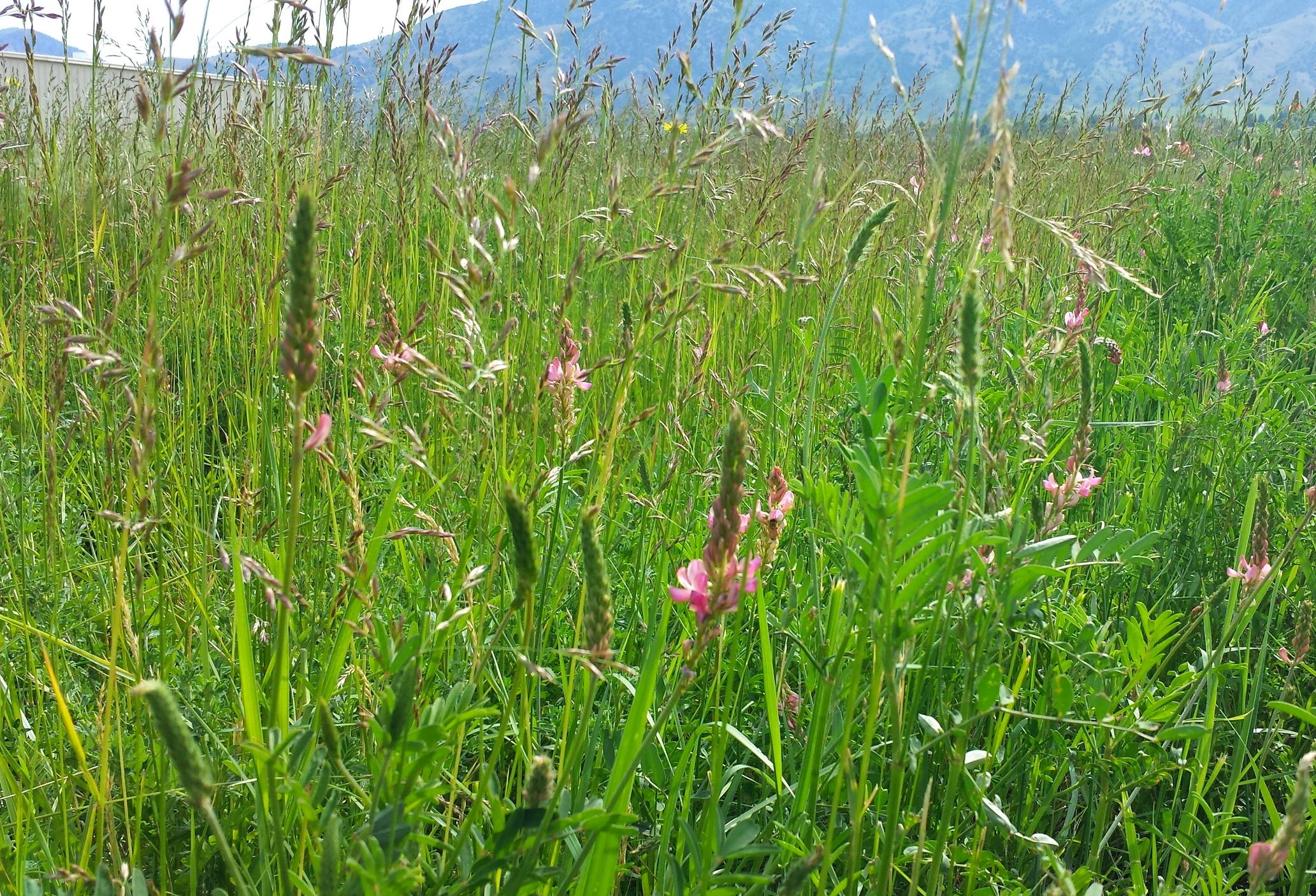Onobrychis viciifolia (Sainfoin)
Tall nitrogen-fixing perennial legume with hollow, succulent stems and pink-striped flowers. Large, deep branching taproot and fine lateral roots. Drought tolerant and winter hardy. Low salt tolerance. Intolerant of high water tables and wet soils; long-lived on dryland when managed properly. Matures faster than Alfalfa (Medicago sativa), providing early spring forage. Quickly gaining popularity as a non-bloat forage alternative to alfalfa. Extremely palatable and highly nutritious; digestibility equal to alfalfa. Use for hay, pasture, rangeland or silage, alone or with grasses. Also use for wildlife habitat enhancement and food plots for elk, deer, pheasant and sage-grouse. Superior honey plant to alfalfa. Not invasive or weedy.
DISTRIBUTION / ADAPTATION
INFORMATION & ATTRIBUTES
Family: Fabaceae
Duration: Perennial
Growth Habit: Forb/herb
Native Status: Introduced
Growth Form: Single Crown
Mature Height: 30 in.
Bloom Color: Pink
Bloom Period: Early Spring
Annual Precipitation: 10-45 in.
Drought Tolerance: Medium
Shade Tolerance: Intolerant
Fire Resistance: No
Fire Tolerance: Low
Nitrogen fixation: Medium
Bloat: Non-bloat
SOIL ADAPTATION
Coarse Texture: Yes
Medium Texture: Yes
Fine Texture: No
Salinity Tolerance: Medium
CaCO3 Tolerance: High
pH Range: 6.0-8.5
SEEDING NOTES
Seeds per Pound: 30,200
Seeding Rate: 35-45 lbs/acre (irrigated) 25-35 lbs/acre (dryland)
Season: Spring/Fall
Days to Germination:
VARIETIES
Delaney - Multiple-cut variety with excellent regrowth potential. Higher forage yields under irrigation than other varieties, as well as Birdsfoot trefoil (Lotus corniculatus), Cicer milkvetch (Astragalus cicer) and Ladak 65 (Alfalfa, Medicago sativa). Use as a replacement for Remont under high rainfall or irrigation. (Released 2007)
Eski - Developed for use in non-irrigated pastures or land with limited water. Used frequently in reclamation, rangelands and wildlife habitat mixtures. Later to mature than Remont. (Released 1964)
Remont - Extremely cold hardy variety with early spring growth and rapid regrowth after haying or grazing. Susceptible to frost damage. High yield potential in areas with a long growing season. (Released 1971)
Shoshone - Developed for high tolerance to the northern root-knot soil nematode. Resistant to alfalfa stem nematode. Cold hardy. Regrows better than Remont and Eski. Higher yield than Remont in both dryland and irrigated settings. (Released 2004)





